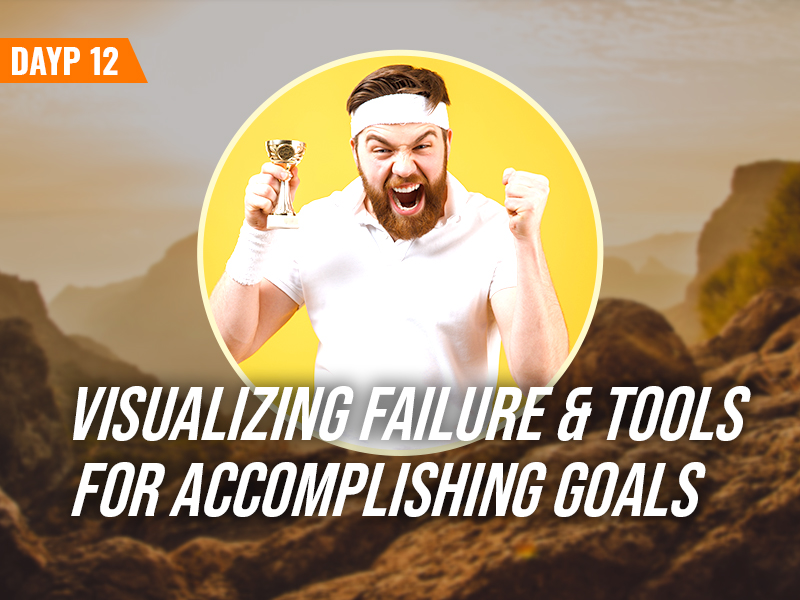This week’s content looks at 9 tools and frameworks based on scientific research you can use for setting and accomplishing goals.
“When people have to focus their attention on one location, like a goal line, they are much more effective at reaching those goals AND they achieve them with the perception that they expended less effort.”
– Dr Andrew Huberman
This episode of the Huberman Lab podcast is filled with interesting science about what happens in our brain when we set and attain our goals. It also covers common misconceptions we have about goal setting, multi-tasking and other strategies that we think are effective. Dr. Huberman lays out 9 different tools that you can immediately use to set goals and accomplish them.
The 9 Tools For Setting and Achieving Goals
Tool #1: 85% Rule for Optimal Learning
- You are in a better position to learn when getting things right about 85% of the time while making errors about 15% of the time.
- Make things hard but not so hard that you’re failing every attempt.
Tool #2: Use Focal Vision to Initiate Goal Pursuit
- Focus your visual attention at one focal length beyond your Peripersonal space (space near your body) for 30-60 seconds
- Utilize this inorder to place yourself into a state of readiness for pursuing your goals.
Tool #3: Use Aged Self-Images to Self-Motivate
- Visual perception of the future allows us to anchor our goal directive systems (motivation) to do things that in immediate may not seem that useful
- What we see in the future is principally important in defining what we do in the now or the immediate term.
- Example:
- One group was asked to imagine themselves 30-40 years later and asked how much money they would need for later in life based on what they visualized.
- A second group was given a digitally aged image of themselves and also asked the same question as the first group.
- It resulted that the second group, simply by perceiving their own image in the future, invested far more money into later in life than group 1.
Tool #4: Visualization of Goals is Only Helpful at the Start
- Visualizing the results of your goals is only helpful at the start. It can be counterproductive in maintaining your pursuit of your goal.
Tool #5: Visualizing Failure is the Best Ongoing Motivator
- The best way to maintain action towards a goal is to regularly visualize failure. This shows a near doubling in the probability of reaching one’s goals.
- Thinking of how bad things could get if you don’t do a certain action, the more likely you are to achieve your goals.
- Example:
- When you set a goal of running 5 miles 4x a week, visualizing how the effects of your failure, such as being disappointed at oneself or feeling negative health outcomes, is a better motivation than picturing how healthy you’re going to be.
Tool #6: Make Goals Moderately Lofty
- The probability of achieving a goal is dependent on whether the goal set is easy, moderate or impossible.
- Set goals that are realistic but challenging and not too easy.
- Easy goals do not elicit enough response from the autonomic nervous system to place you in an ongoing effort to pursue the goal and, as a result, cause you to give up quickly.
- Extremely lofty goals do not place the body in a state of readiness to achieve the goal since it’s out of reach.
- Moderate goals, which are just outside one’s immediate capabilities but within one’s range capacity, will likely lead to an ongoing pursuit of goals.
Tool #7: Avoid Goal Distraction; Focus on 1-2 Major Goals Per Year
- Limit your goals. Trying to achieve too many things at once can be counterproductive.
- The more things compete for our attention, the more attention is diverted away from our primary goals.
Tool #8: Ensure Specificity of Goals, Weekly Assessment
- Set specific action steps to visualize what success would look like rather than relying on a hazy idea. This provides some sort of measure when assessing your actions and devising plans for updating your actions to achieve your goal.
Tool #9: Space-Time Bridging
- Space-time bridging is a meditation tool that uses our vision to mirror the process of achieving goals.
- The process involves 4 steps and each step involves 3 breaths in and out:
- 1: Internal focus. Close your eyes and focusing your attention inward
- 2: Near external focus. Open your eyes and focus your gaze on single point on your body (like you the palm of your hand)
- 3: Further external focus. Now look further in the distance 5-15 feet away
- 4: Wide external focus. Now look as far as you can in the distance (like the horizon) and try to take in the entire scene
- Repeat Steps 1-4 for 3-4 times
- Our visual system controls how we slice up time. The closer something is the more finely sliced it is. Goals are similar in that we set up a goal in the future and then divide up our time into milestones along the way in order to get to our ultimate goals. This practice builds and reinforces good goal-directed habits.
References, sources and more:
- Source: THE SCIENCE OF SETTING & ACHIEVING GOALS
- Space-Time-Bridging Meditation
- The SMARTER Way To Set Goals
